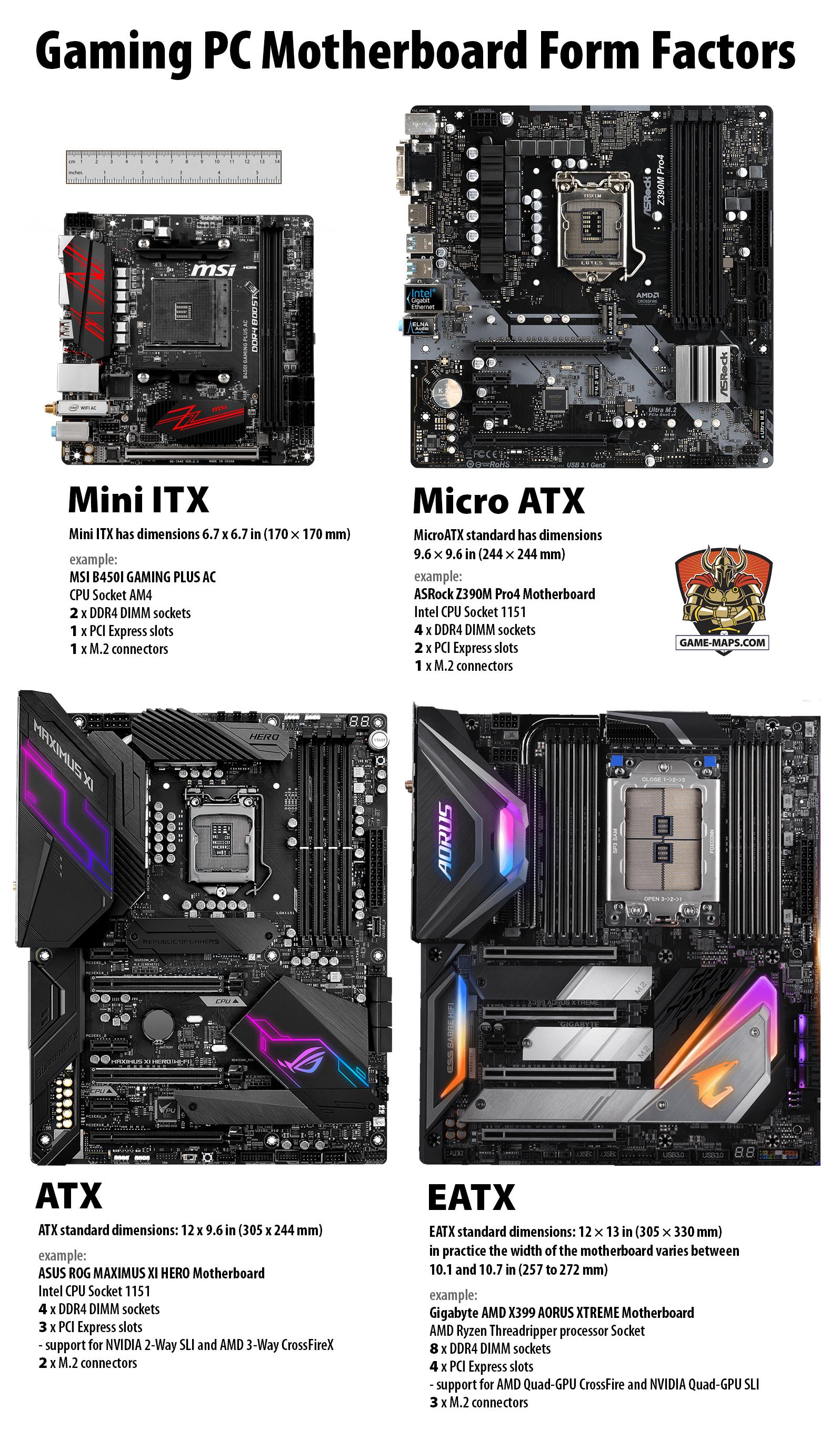PC Motherboard Guide: Best Motherboard for PC Gaming
PC Gaming Motherboard Guide: How to choose a motherboard for PC Gaming? Sockets, Chipsets for AMD and Intel CPUs, Motherboard Form Factors, M.2 Sockets, Cooling, Expansion Slots, Accessories, Connectors and Ports in Motherboards.
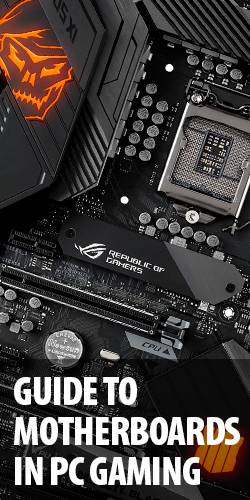
- How to choose a motherboard for PC Gaming?
- Socket and Chipset for Gaming PC Motherboard
- AMD Socket AM4 with X570 Chipset
- AMD Socket AM4 with B450 Chipset
- Intel Socket LGA 1151 with Z390 Chipset
- AMD Socket TR4 with X399 Chipset
- Intel Socket LGA 2066 with X299 Chipset
- PC Motherboard Form Factors
- Sample PC Motherboard Layout
- M.2 Sockets
- RAM DIMM Slots
- Cooling
- Expansion Slots, Accessories, Connectors and Ports
- PCIe Slot
- Integrated Graphics Card
- SATA ports
- LAN Controller
- Wireless Network Controller
- Build in Audio Card
- USB Ports
- Bluetooth
- Sample PC Motherboard Rear Panel Layout
- What Motherboard should I buy for Gaming PC?
PC Motherboard is the main circuit board connecting the CPU, RAM, Graphics Card, Storages and other computer components. The motherboard provides all components with adequate power and coordinates their cooperation as a whole computer.
There are many different types of Desktop PC motherboards, this guide is devoted exclusively to Gaming PC Motherboards.
The motherboard is an important element of Gaming PC, although it does not directly affect the speed of games.
important
How to choose a motherboard for PC Gaming?
The first step should be choosing the screen resolution at which you will play games. What is the Best Screen Resolution for PC Gaming?
The second step should be to choose the appropriate graphics card for this screen resolution, will it be NVIDIA or AMD card, or will it be more than one graphics card? Graphics Cards for Gaming
The third step is to choose a CPU with the right speed relative to your graphics card's performance and planned screen resolution. Best CPU for PC Gaming
The fourth step is to decide what type of storage we will use M.2 NVMe, SATA SSD or HDD and how many drives we plan to install. PC Storage Guide
Knowing the type of processor we will know what type of socket our motherboard should have and what chipset it will have, whether it must support multi GPU or not, what types and how many connectors for storage we need.
minor
Manufacturers of motherboards for gamers.
There are four main companies that produce motherboards for the Gaming Desktop PC and they are: Asus, MSI, Gigabyte, ASRock. There are of course more companies, but I would stay with those four. Their corresponding products are of a similar quality, if someone forced me to choose which one is the best, then I choose in the order I wrote them.
Each company has at least three price levels for motherboards, for both Intel and AMD CPUs, as well as special lines of products intended for gamers.
The products of each of these companies will provide you with the appropriate quality and stability of your Gaming PC. It seems reasonable selection of brand motherboard graphics card brand.
important
Socket and Chipset for Gaming PC Motherboard
You have no choice here. Depending on which CPU you choose, the right type of motherboard is designed for it. The determinant is Socket and Chipset.
There are many types of Sockets and Chipsets for PC Desktops. I will limit myself to the latest ones, for CPUs listed in the Best CPU for PC Gaming
It makes no sense to go back to outdated solutions or deal with past technologies. When buying a CPU and a motherboard for your Gaming PC, you should focus on modern solutions.
AMD CPUs use AM4 sockets and current Intel CPUs require LGA 1151.
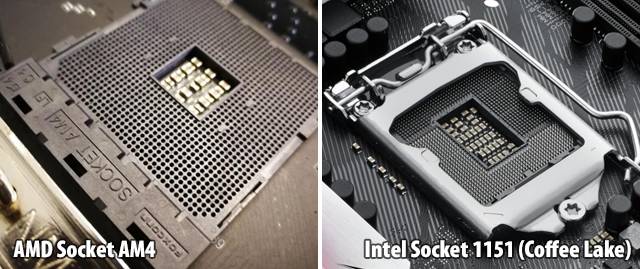
AMD Socket AM4 and Intel Socket 1151
All of the following socket and chipset sets provide at least DDR4 memory support, PCIe 3.0, and NVMe for SSD, which is what we expect from modern motherboards.
important
AMD Socket AM4 with X570 Chipset
The latest solution from AMD directed to Performance / Enthusiast market segment and new AMD Ryzen 3000 Series processors.
New fast PCIe 4.0 standard enabling future generations of graphics cards and NVMe drives. Supports overclocking.
This is the recommended solution for anyone wanting to base their Gaming PC on AMD CPUs and graphic cards.
minor
AMD Socket AM4 with B450 Chipset
A cheaper and older solution for AMD CPUs is still enjoying great success, mainly due to the lower price of motherboards. Supports overclocking.
The solution was designed for Ryzen 2000 series processors, but the BIOS upgrade on most boards allows support for Ryzen 3000 series (with possible problems).
important
Intel Socket LGA 1151 with Z390 Chipset
Top, latest Intel solution for new Intel CPUs.
Z390 Chipset enables overclocking with "K" CPUs.
Recommended for anyone wanting to use the Intel CPU for their Gaming PC.
insignificant
AMD Socket TR4 with X399 Chipset
This is solution for AMD Threadripper CPUs.
It may be necessary and applies when you want to use Multiple Graphics Cards.
This is not recommended for PC gaming unless you need a fast multi-core CPU.
insignificant
Intel Socket LGA 2066 with X299 Chipset
This is solution for Intel high-end desktop and Workstation platforms (expensive).
It may be necessary and applies when you want to use Multiple Graphics Cards.
This is not recommended for PC gaming unless you need a fast multi-core CPU.
PC Motherboard Form Factors
Motherboards Form Factor standards describe the maximum dimensions, mounting points (screw holes) for PC Case, location of I/O panel and power supply configuration. The larger motherboard size, is nothing bad and it means more space for components, expansion slots and memory slots. In the context of Gaming PC, we are mainly interested in ATX and EATX standards.
It is important that the motherboard and PC case should match the same form factor standard.
Motherboard form factor is not a parameter that you will choose first (unless you care about the small dimensions of the PC case), but it is results of the number and type of components you want to insert and connect to your PC.
So, as you will already know what the configuration of your Gaming PC should look like, you will find the right motherboard, check its form factor, and finally you will be able to choose the case.
important
ATX
ATX (Advanced Technology eXtended) is most popular form factor for motherboards and PC cases in desktop PC.
Standard ATX has dimensions 12 x 9.6 in (305 x 244 mm)
The motherboard in this standard should contain on average: 1 x CPU socket, 4 x DDR4 DIMM RAM slots, 2-3 PCIe slots (graphics card) and 1-2 x M.2 sockets and other connectors.
important
EATX
EATX (Extended ATX) is an enlarged version of the ATX standard, at the same height it is slightly wider, giving space for additional components.
Standard EATX has dimensions 12 × 13 in (305 × 330 mm), in practice with the same height as ATX, the width of the motherboard varies between 10.1 and 10.7 in (257 to 272 mm).
EATX can hold on up to: 2 x CPU sockets, 5 x PCIe slots, 8 x DIMM RAM slots, 3 x M.2 sockets and other connectors.
minor
Micro ATX
MicroATX is smaller than ATX standard, designed for smaller PC cases.
MicroATX standard has dimensions 9.6 × 9.6 in (244 × 244 mm), screw holes are compatible with ATX and EATX, so MicroATX also fits standard PC cases.
MicroATX has smaller dimensions so it is not able to contain the same elements as ATX. The most common configuration is: 1 x CPU socket, 2-4 x DDR4 DIMM RAM slots, 1-2 PCIe slots (graphics card) and 1-2 x M.2 sockets and other connectors.
insignificant
Mini ITX
MiniITX is smaller than Micro ATX standard, aimed for home theatre or other fanless applications. A useful format only for the simplest Gaming PC designs.
Mini ITX has dimensions 6.7 x 6.7 in (170 × 170 mm)
A simple, small design generally includes: 1 x CPU socket, 1 x PCIe slots, 2 x DIMM RAM slots, 1 x M.2 sockets and other connectors.
insignificant
Other Form Factors
There are a few other motherboard form factors, but they are a marginal minority in the context of Gaming PC, being used for servers, rack-mounts, multi CPUs and small fanless applications.
Sample PC Motherboard Layout

Sample PC Motherboard Layout
LGA1151 CPU Socket
DDR4 DIMM slots
Intel Z390 Chipset
(under heat sink)
ATX power connectors
(24-pin EATXPWR, 8-pin EATX12V_1, 4-pin EATX12V_2)
6 x Serial ATA 6 Gb/s connectors
PCIe 3.0 x16 slots
M.2 Sockets
(under heat sinks)
important
M.2 Sockets
What new motherboards have to offer compared to traditional solutions is the modern M.2 Sockets. Using M.2 we can connect modern very fast NVMe drives.
If you want a fast and modern Gaming PC, the use of NVMe drives seems to be a must. More info about PC Storages at: M.2 NVMe vs SATA SSD vs HDD
The exact slot type you need is: M.2, with M key, type 2280, PCIE 3.0 x 4 mode or PCIE 4.0 x 4 mode.
Where "M key" means the ability to connect NVMe type drives, and "type 2280" means most popular dimension of NVMe drives and PCIE 3.0 x 4 (PCIE 4.0 x 4) required PCIe standard.
Depending on how many drives you want to connect and whether you want to use M.2 for other applications, you will need one to three M.2 Sockets.
It is very important when buying a new motherboard that you check how many M.2 devices you can connect to them.
The M.2 Screw Package should be attached to the box with the motherboard, keep them because they will be useful.
minor
RAM DIMM Slots
When buying components for the new Gaming PC, you should choose only DDR4 memory. This is the only right choice at the moment.
Most modern motherboards have 4 x DDR4 DIMM slots, and that's enough for you.
Motherboards with a smaller form factors sometimes have only 2 x DDR4 DIMM slots, if you have chosen such solution, you need to buy up on the appropriate size and number of RAM chips, this is also an acceptable option.
For more information on choosing RAM for Gaming PC, please visit: How much RAM do I need for Gaming?
minor
Cooling
A modern Gaming PC motherboard shouldn't have any fans on it.
There are tendencies to place the fan on the chipset heat sink on the new X570 motherboards as in the old days. For me this solution is unacceptable. Small, high-speed fans are simply loud.
What we need, however, are certainly M.2 heatsinks that should be in every good motherboard, as well as heatsinks for chipset and other heating elements.
Of course, both the CPU and the graphics card must have its own independent cooling.
If you decide on water cooling for your Gaming PC, you should buy a motherboard adapted for this type of cooling.
Expansion Slots, Accessories, Connectors and Ports in Motherboard.
important
PCIe Slot
The most important slot is PCIe 3.0 x16, here we will connect a graphics card. All modern motherboards for players have at least one such slot.
If you plan Multi GPU solution, you will need the right amount of such slots. You also need to check if your motherboard has support for NVIDIA SLI or AMD CrossFireX Technology.
The new X570 Chipset from AMD have support for PCIe 4.0. This is a forward-looking solution because there are no graphics cards that can use the PCIe 4.0 bandwidth, and it is also compatible with PCIe 3.0.
In general, it's okay to have PCIe 4.0 because it may turn out that the next graphics card you buy will also have requirements.
insignificant
Integrated Graphics Card
Some motherboards have Integrated Graphics Processors, i.e. a graphics card that works with the CPU.
These cards in the context of playing games will not be useful to us much.
But you can always connect one of the additional monitors to them when we run out of ports on our main graphics card. In general, it is useless option.
minor
SATA ports
Modern motherboards have a 4 to 6 SATA 6Gb/s port. Here we attach internal drives such as HDD, SSD or optical drives.
I would like to encourage you to completely abandon slow SATA drives in favor of fast NVMe drives.
Necessary if you stay with SATA drives, but this type of port is standard on all motherboards.
important
LAN Controller
A computer without an Internet connection does not exist in the modern world. You can connect to the internet using a well-known Wi-Fi or LAN controller.
I always strongly urge everyone to connect to the Internet via LAN if possible. This connection is more stable, faster and has less latency.
LAN Controller is required for a good Gaming PC. You can make a LAN connection using a separate network card, but the LAN Controller built into the motherboard seems to be the best solution.
In most cases, you only need only single LAN Controller.
minor
Wireless Network Controller
If you can't connect to the Internet via LAN, you are forced to use a Wi-Fi connection.
There are external cards that support Wi-Fi, but if we have the opportunity to buy a motherboard with its own Wireless Network Controller, this is the best solution.
It is very important, however, for this controller to have an external antenna for Wi-Fi.
minor
Build in Audio Card
The quality of audio circuits added to motherboards for players is currently very high.
This is not a quality which will satisfy the real audiophile, but for gaming, surround sound, using microphone when playing games, this is absolutely sufficient quality.
In fact, every motherboard for players has a built-in sound card. More expensive motherboards have better quality chips, but even cheap motherboards have an acceptable level of audio.
minor
USB Ports
You will need at last one or two USB 3.1 Gen 2 ports (best for now), check if they are available on the motherboard of your choice. You will use these ports as needed to connect new hardware-intensive external USB devices.
USB 3.1 Gen 1 and USB 2.0 ports are standard in modern mainboards for gamers. This type of ports are used to connect standard speed-independent USB devices, such as mouses and keypad.
insignificant
Bluetooth
If you intend to use external devices (e.g. headphones, keyboards or mouse) connected via Bluetooth, you can decide to buy a motherboard with built-in Bluetooth 5.0. However, solutions added to Bluetooth devices, USB transmitters, will probably work better.
Sample PC Motherboard Rear Panel Layout
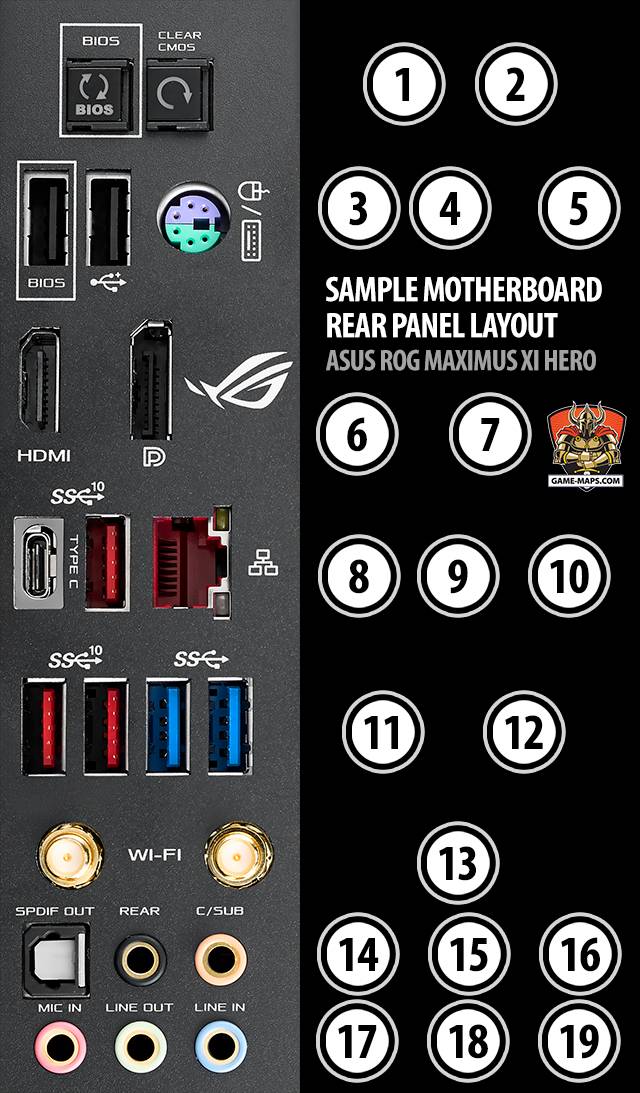
Sample PC Motherboard Rear Panel Layout
USB BIOS Flashback button
Clear CMOS button
Press this button to clear the BIOS setup information only when the systems hangs due to overclocking.
USB 2.0 Type-A port
Port supports the USB BIOS Flashback
USB 2.0 Type-A port
PS/2 mouse/keyboard combo port
HDMI port
for internal graphic card.
DisplayPort
for internal graphic card.
USB 3.1 Gen 2 Type-CTM
USB 3.1 Gen 2 Type-A
LAN (RJ-45) port
USB 3.1 Gen 2 Type-A ports
USB 3.1 Gen 1 ports
Wi-Fi 802.11 a/b/g/n/ac, Bluetooth v5.0
Optical S/PDIF OUT port
Audio I/O Port BLACK
Rear Speaker Out
Audio I/O Port ORANGE
Center / Sub woofer
Audio I/O Port PINK
MIC IN
Audio I/O Port LIME
Line OUT / Front Speaker OUT
Audio I/O Port LIGHT BLUE
Line IN / Side Speaker OUT
important
What Motherboard should I buy for Gaming PC?
The choice of motherboard depends on the decisions you made when choosing a graphics card (one or more than one), CPU, RAM and storage type.
- For AMD Ryzen 3000 Series CPUs select Socket AM4 with X570 Chipset
- For AMD Ryzen 2000 Series CPUs select Socket AM4 with B450 Chipset
- For Intel Core CPUs (modern Coffee Lake Family) select Socket LGA 1151 with Z390 Chipset
You will need motherboard with:
- no less than two M.2 Sockets (M.2, with M key, type 2280, PCIE 3.0 x 4 mode or PCIE 4.0 x 4 mode)
- no less than 2 x DDR4 DIMM slots
- Heatsinks on M.2 sockets and chipset
- Wireless Network Controller (if it is needed)
- the rest of the additional functionality should be available on every new motherboard.
by Longwinter (game-maps.com)
One who always look on the Asus side of life ...
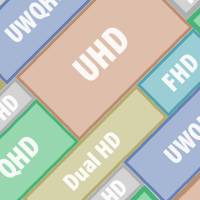
What is the Best Screen Resolution for PC Gaming?

Graphics Cards for PC Gaming
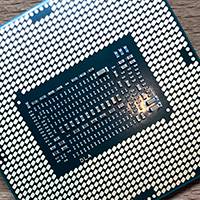
Best CPU for Gaming PC
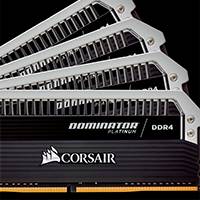
How much RAM do I need for Gaming?
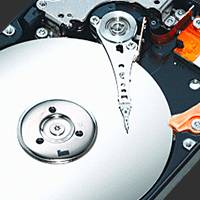
PC Storage Guide: M.2 NVMe vs SATA SSD vs HDD
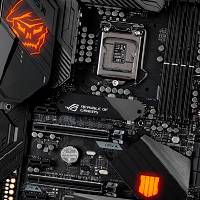
Best Motherboard for PC Gaming
Use Disqus comments below
All your comments, suggestions and corrections are very welcome.
Your experience helps other players.
Each comment will be read and the information contained therein used to improve the content of this page.
Thank You.

